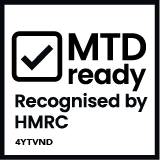Looking for the rates for the 2022/23 tax year? Check out our 2022/23 self-employed tax rate guide.
In the article below, you'll find a summary of the 2021/22 tax rates for sole traders. It’s worth familiarising yourself with them so that there are no surprises when you come to complete your tax return and pay your tax bill at the end of the year.
Personal Allowance 2021/22
Everyone has a Personal Allowance—an amount of money that you can earn tax-free—that gets reset at the beginning of each tax year. It's important to remember that how much this is changes based on your earnings (so you may need to check in on this a couple of times).
Income tax rates 2021/22
If you're based in England, Wales or Northern Ireland, all income that you earn over and above your Personal Allowance will be taxed as follows:
If you live in Scotland then different income tax rates apply, these are shown below:
National Insurance rates 2021/22
In addition to income tax, sole traders also need to pay National Insurance Contributions to HMRC. The amount that you need to pay depends on your profits.
There are two forms of National Insurance: Class 2 and Class 4. For the 2021/22 tax year, National Insurance rates are as follows:
Class 2:
Class 4:
VAT
Once the annual revenue of your company reaches £85,000, you will need to register for Value Added Tax (VAT), a tax paid on most goods and services. Once you’ve registered, you'll need to start charging VAT on your sales—but you can also reclaim VAT on purchases, too.
Managing VAT is where finances can start to get slightly complicated, as there are a few different rates and VAT schemes to be aware of. It requires careful record-keeping of all transactions and the rate of VAT they were charged at. Here are the standard VAT rates:
Always know how much you need to set aside for tax
With Coconut's tax app for sole traders and landlords, you'll be able to easily track your income and outgoings throughout the year—meaning you’ll always have an up-to-date view of how much you need to set aside for tax.











